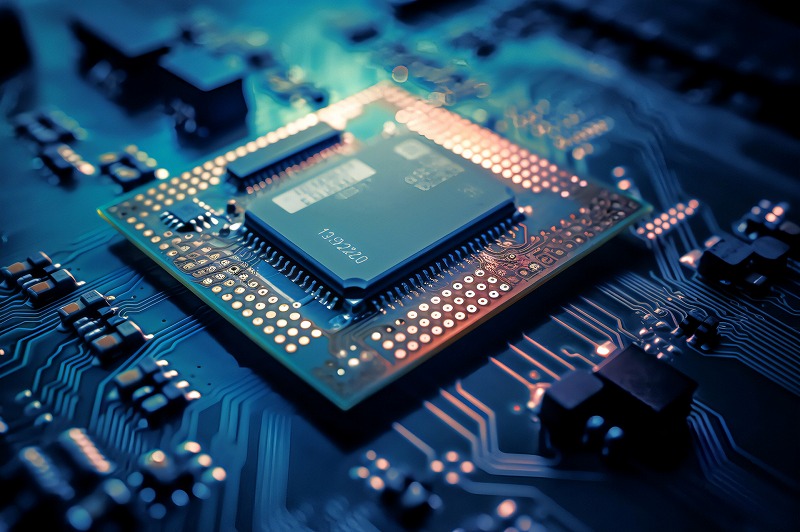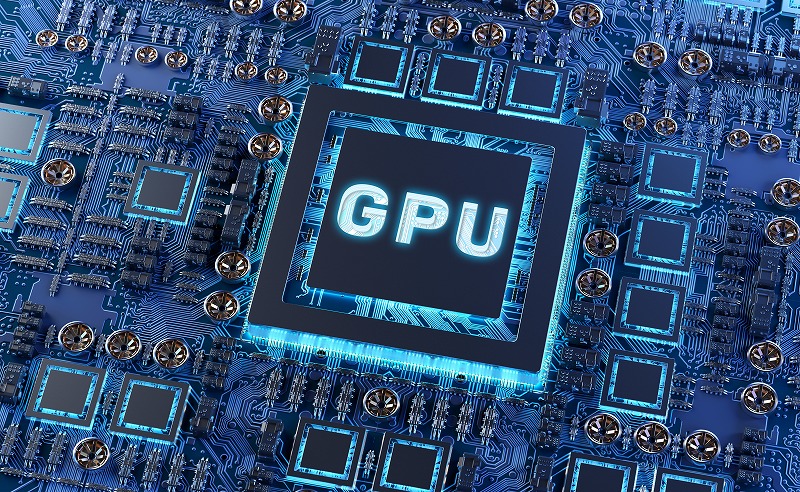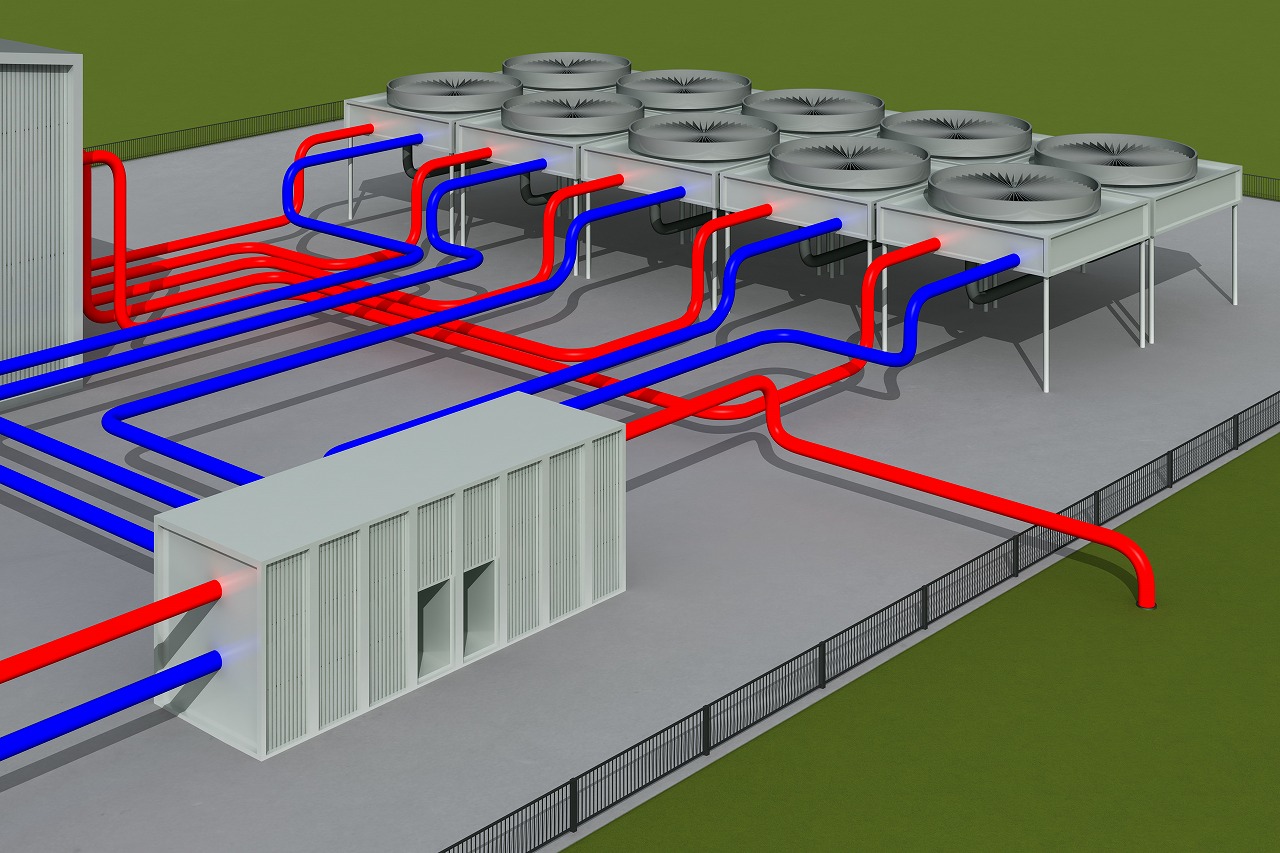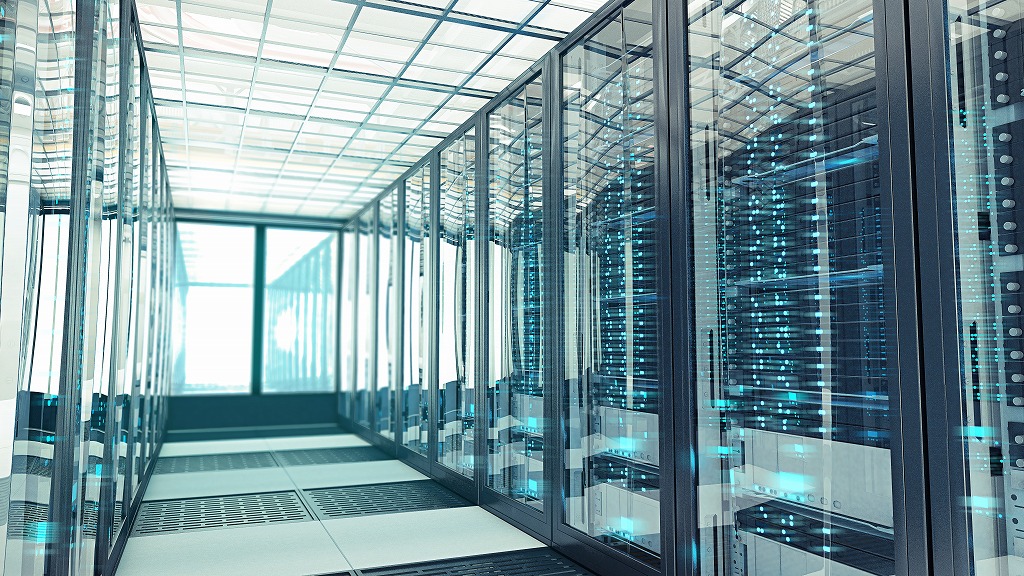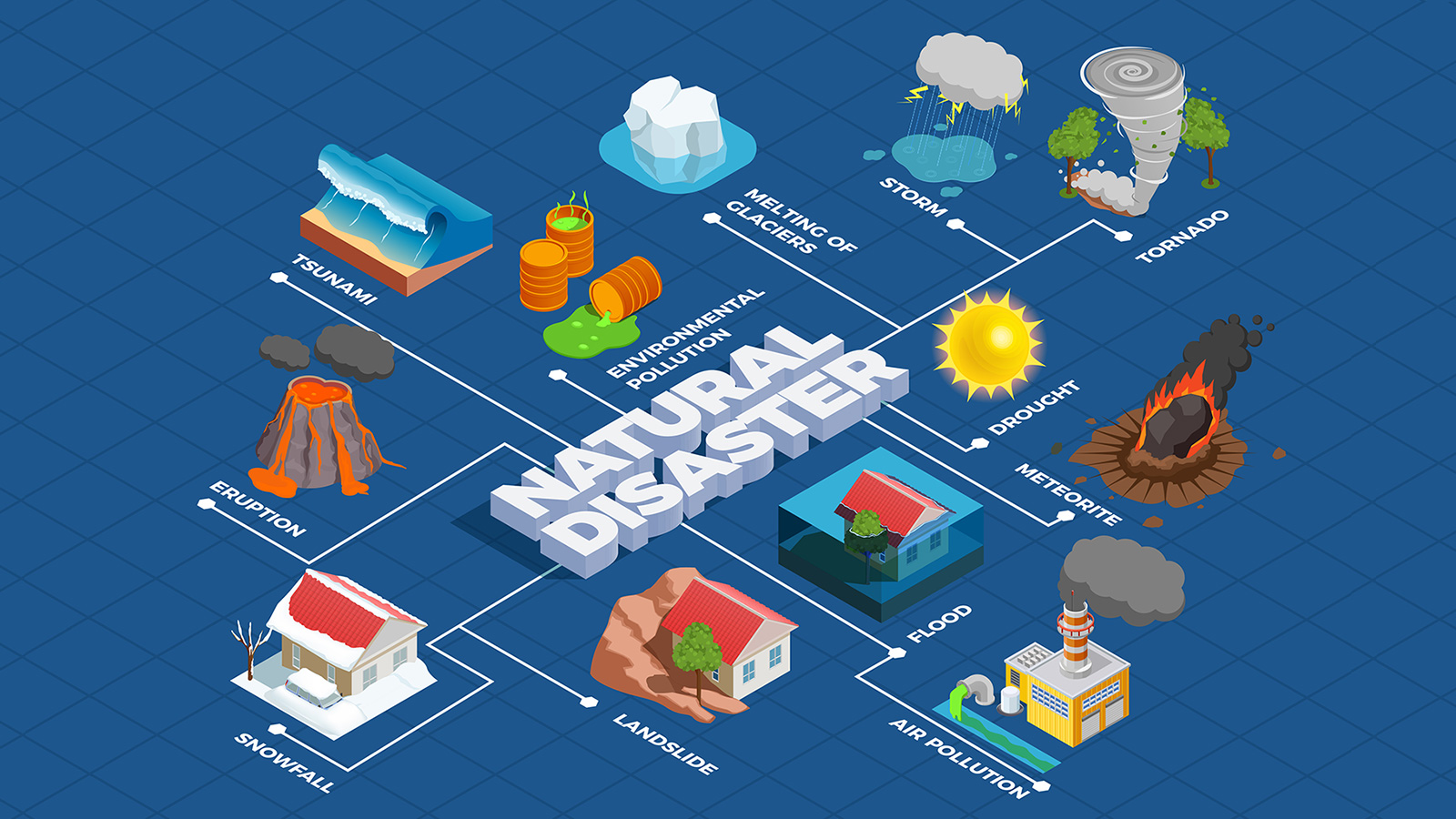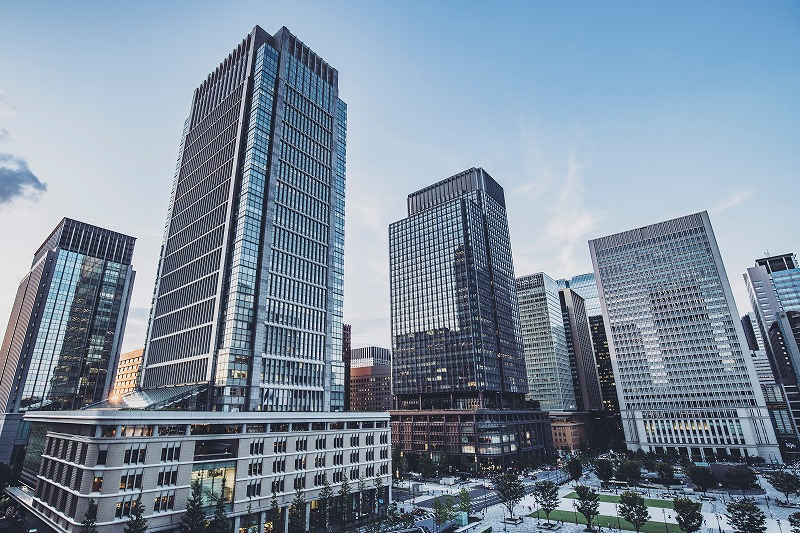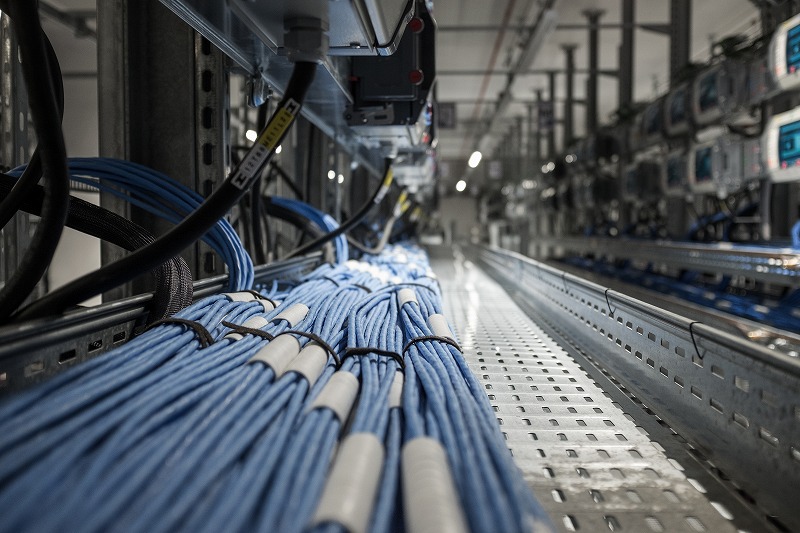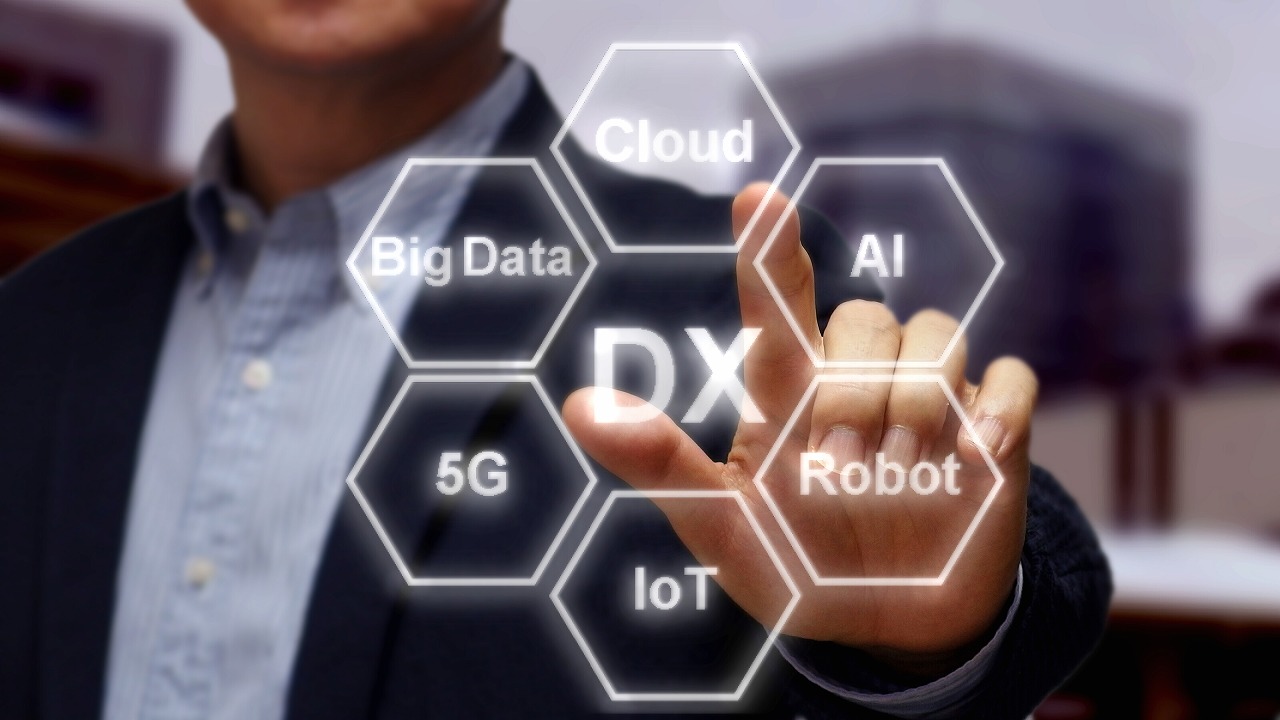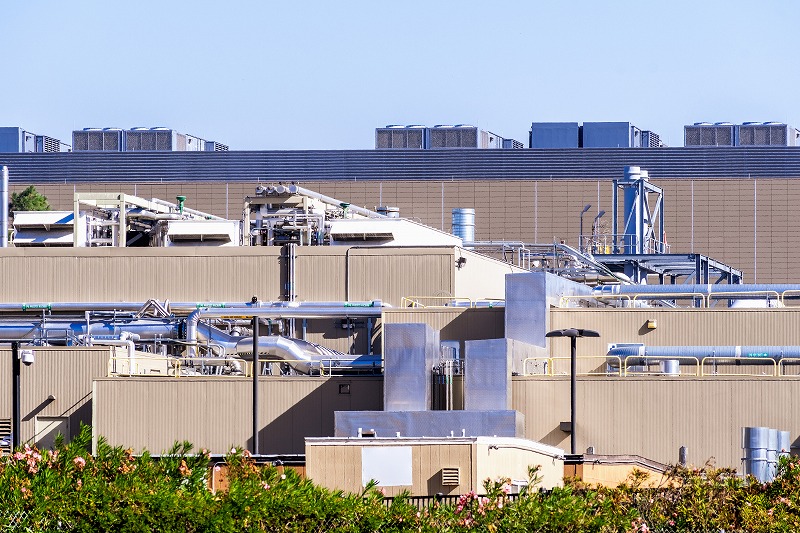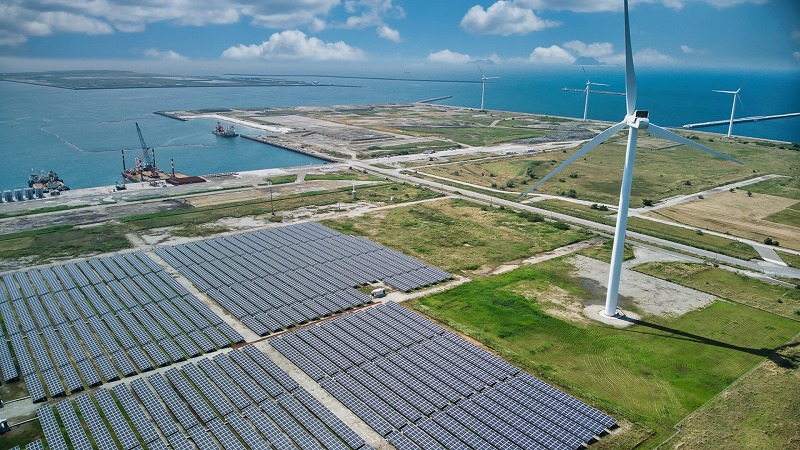
Will create a Data Center
which highly fits to an ESG investment


For a sustainable future for data centers and digital infrastructure
Data center investment in Japan is booming, and demand is expected to continue to grow. On the other hand, we are facing the warning about the enormous power consumption. In addition, most data centers are concentrated in Tokyo and Osaka, and it is still difficult to realize the national policy, i.e. "optimal arrangement of data centers in Japan". We Digital Infrastructure Lab are here to support a project to develop and utilize data centers and * digital infrastructure for the stakeholders auch as land owners, data center operators, developers, investors, energy operators, data center related equipment manufacturers, government, local governments.
* Not limited to data centers, it covers the fields of e-commerce logistics facilities, digital-related laboratories, base stations / communication networks, and renewable energy facilities.
To realize "ideal" digital infrastructure investment
- ALL
- TOPICS & NEWS
- ESG + DC
- Founder message
2024.04.25
NVIDIA Announces “World’s Most Powerful Chip,” the Next-Generation AI Semiconductor B200 GPU
In March 2024, NVIDIA, a leading semiconductor company, announced the launch of the next-generation AI semiconductor “Blackwell B200” GPU.
What is B200?
“Blackwell B200” is a combination of two chips of the same size as the company’s previous products, and the number of transistors that greatly affect performance is 208 billion, compared to 80 billion in the previous main product “H100”. Approximately 2.6 times.
What is the price of B200?
The B200 is expected to ship in the latter half of 2024, and while pricing is still unclear, it is expected to be higher than the “H100” and “H200.”
However, the announcement that major cloud service providers such as Amazon, Google, Meta, Microsoft, Open AI, and Oracle are expected to adopt this new semiconductor underscores the significant impact this technology will have on the industry.
NVIDIA is not only accelerating the advancement of AI technology but is also solidifying its position as a key player in the industrial sector.
As the processing power of GPUs improves, there is no doubt that AI will be increasingly utilized. The development of generative AI is also expected to increase the production of content that requires substantial data volumes, such as videos and music, which were previously difficult to generate. Thus, the demand for data centers is expected to continue rising.
We will continue to monitor industry trends.
2024.04.15
OpenAI’s Revolutionary Video Generation AI “Sora”: Comprehensive Explanation from Capabilities to Examples, Pricing, and Applications.
In February 2024, OpenAI, famous for Chat GPT, announced a new video generation AI named “Sora”. As of April 2024, however, “Sora” is not yet available to the general public, and its pricing details remain undisclosed.
“Sora” is a next-generation AI system that builds upon OpenAI’s large-scale language model, GPT-4, with further enhancements.
With just a simple instruction, it can easily create high-quality videos up to one minute long.
While video generation AIs existed before, they could only produce videos of a few seconds, making “Sora” superior in both length and quality.
The launch of “Sora”, equipped with GPT-4, is undoubtedly set to significantly impact the world.
This article will provide a detailed introduction to the video generation AI “Sora”, including its overview, pricing, user experience, and applications.
Examples of “Sora” Creations
The following videos are actual examples created by “Sora”:
-
Balloon Head Prompt: Sunny, our balloon-headed boy, embodies the blue sky feeling of boundless potential that we felt when we first began using the tool. Our heads filled with so many ideas, it felt like they might POP.
-
Gold Record Bullying Prompt: Exploring space-time with Sora. This isn’t going to replace the filmmaking process, rather, it’s offering an entirely new way of thinking about it. Not restricted by time, money, or other people’s permission, I can ideate and experiment in bold and exciting ways.
Pricing of “Sora”
As of April 2024, the pricing structure for “Sora” after its public release has not yet been announced. However, based on previous patterns like Ghat-GPT, it is likely that both free and paid versions will be released, with more advanced features available only in the paid version. Initially, all features might be offered for free, with some becoming paid later on.
Applications of “Sora”
The potential future applications of “Sora” include:
-
Movies and animation videos
-
Virtual reality (VR) experiences
-
Educational explanatory videos and tutorials
-
Breaking news and weather forecasts
-
Product promotion videos
-
Short videos for social media
-
Personalized message videos
-
Virtual tour videos for real estate properties
-
Virtual event videos like fashion shows
-
Automated editing of sports highlights and commentary videos
-
Simulation videos in the medical and scientific fields
-
Documentary videos about historical events and figures
-
Music videos and live performance videos
-
Video manuals for automobiles and household appliances
-
Visualization and reporting videos of stock market and financial data
-
Presentation videos for architectural and interior design
-
Emergency evacuation routes and safety procedure videos
-
Language learning conversation scene videos
-
Customized videos for personal memories and anniversaries
These are just examples, but the ease of creating videos can cater to viewer demographics and needs, allowing for the creation of original videos. The ability to easily produce virtual imagery, which used to be costly, will likely be a major advantage.
Video Generation AI and Data Centers
Plans for new data centers dedicated to generation AI are being announced in succession. Given the large data capacity required for easily creating videos, the demand for data centers is expected to continue growing.
2024.03.25
NVIDIA Announces Earnings: Significant Increase in Revenue and Profit Marking Strong Performance
NVIDIA announced its fiscal year earnings for January 2024 on February 21st. The annual revenue reached $60.9 billion, marking a 126% increase from the previous year, with operating profit soaring to $33 billion, an increase by 7.8 times.
For the fourth quarter (November to January), the revenue was $22.1 billion, a 265% increase year-over-year, exceeding the company’s forecast of $20 billion. The operating profit for the quarter reached $13.6 billion, a tenfold increase, with an operating margin surpassing 61%.
In response to the strong performance, the after-hours stock price surged by over 7%. The sales forecast for the February to April period is set at $24 billion (±2%), with a confident outlook stating, “We will continue to grow in 2024, 2025, and beyond.”
Half of data center sales are for the cloud
Demand for data centers continues to drive NVIDIA’s performance.
Data center revenue has been increasing quarterly, with the third quarter reaching $14.51 billion, a 279% increase. The previous quarter saw revenue of $10.32 billion, a 171% increase, and the first quarter reported $4.28 billion, a 14% increase.
In the latest quarter, more than half of the data center revenue came from major cloud providers.
Jensen Huang, the founder and CEO of NVIDIA, stated, “Accelerated computing and generative AI are at a turning point. There is a surge in demand worldwide across corporations, industries, and nations.” He claims that the data center installation base amounts to approximately $1 trillion and predicts the emergence of data centers worth $2 trillion that will power global software over the next four to five years.
Will NVIDIA Continue Its Dominance?
The demand for data centers is expected to grow further. With the expansion of generative AI, the demand for high-performance semiconductors is surging, and NVIDIA is extending its lead in securing orders.
On March 19th, Hitachi, Ltd. announced a collaboration with NVIDIA in developing AI services. The partnership aims to digitize railways and infrastructure facilities in virtual spaces to improve maintenance efficiency.
Moreover, NVIDIA and Chinese EV companies have announced an expansion of their partnership to enhance autonomous driving technology.
While NVIDIA’s dominance seems likely to continue for the time being, we will keep a close eye on the company’s developments.
2022.06.27
Utilization of geothermal heat in units of MW
When geothermal heat utilization is mentioned, “geothermal power generation” comes to mind, and instability is pointed out.
However, since geothermal heat always maintains a constant temperature, it can also be used for heating and cooling through heat exchange.
Digital Infrastructure Lab visited Mr. Masakatsu Sasada, an authority on the use of geothermal heat (President of the Association for the Promotion of Geothermal Heat Use), to learn more about how geothermal heat is being used.
There are examples of large hospitals utilizing MW units of geothermal heat for air conditioning, and inquiries to Mr. Sasada from general contractors and others have been increasing.
We also heard about popular data center sites and areas suitable for geothermal heat utilization.
We will continue our research in order to make use of this information in our concrete proposals.
2022.08.09
Ministry of Internal Affairs and Communications, “Project for Strengthening Digital Infrastructure by Distributing Data Centers, Submarine Cables, etc. in Local Areas,” The Future of Data Center Business as Seen from the Results of the First Adoption.
List of Adopted Businesses
On June 27, 2022, the Ministry of Internal Affairs and Communications (MIC) announced the results of the first round of public solicitation for the “Project for Strengthening Digital Infrastructure by Distributing Data Centers, Submarine Cables, etc. in Local Areas”.
The selected businesses are as follows
|
Indirect Subsidiaries |
Location |
|
Ishikari Enedata Center No.1 LLC |
Ishikari City, Hokkaido |
|
Yahoo Japan Corporation |
Shirakawa City, Fukushima |
|
NTT Global Data Center |
Souraku-gun, Kyoto |
|
Optage Inc and KS Higashi Umeda, LLC |
Osaka City, Osaka |
|
Softbank Corporation and BBIX Corporation |
Ikoma City, Nara |
|
Internet Initiative Japan Inc. |
Matsue City, Shimane |
|
QTent Corporation |
Fukuoka City, Fukuoka |
What is the purpose of the public offering?
The Ministry of Internal Affairs and Communications (MIC) has stated that the purpose of this public offering is to support the establishment of digital infrastructure such as data centers, submarine cables, and Internet access points (IX) in Japan, where large-scale earthquakes are expected to occur, and to develop robust communication network bases through decentralization, in order to contribute to the development of a “safe and secure” data hub from the perspective of economic security and other issues. The project will contribute to the development of a data hub that can store and process domestic and international data in a “safe and secure” manner from the perspective of economic security, etc.
Local Governments Want to Attract Data Centers
Prior to this, on April 12, 2022, the Ministry of Economy, Trade and Industry (METI) published on its official website a list of sites that are open to the establishment of new data centers.
In order to optimize data center placement, we exchanged opinions with local governments that were interested in establishing new data centers, and more than 100 local governments proposed candidate sites.
What is the future of the data center business?
According to the latest forecast of the domestic data center service market by IDC Japan K.K. released in 2021, the data center market in Japan will be worth 2,798.7 billion yen in 2025, with an annual growth rate of 12.5% from 2020 to 2025. The market is expected to continue to grow on the back of demand for cloud computing.
According to the company’s survey, new data centers are expected to be built one after another for about four years starting in 2021, and the number of business data centers to be built during this period is expected to be around 200,000 square meters (equivalent to four Tokyo Domes) annually on a total floor area basis.
Keep an eye on this increasingly active data center investment.
We propose off-balancing based on our knowledge of digital infrastructure.
Investments in digital infrastructure, as typified by data centers, are extremely expensive and require a variety of information gathering, which often results in missed business opportunities due to lack of speedy decision making. To promote sustainable digital infrastructure investment in Japan, we at Digital Infrastructure Lab bring together people with practical experience in feasibility assessments, fund and asset management, construction and development, and data center operations.
We offer ESG investment proposals that benefit your company, focusing on off-balance sheet schemes based on our knowledge in the digital infrastructure area.
For more information.
https://di-lab.biz/proposed-scheme/
Quotes and references.
https://www.ciaj.or.jp/ciaj-wp/wp-content/uploads/2022/06/20220627saitaku.pdf
https://www.ciaj.or.jp/dc_inf/#inner_info
https://www.meti.go.jp/press/2022/04/20220412003/20220412003.html
https://www.idc.com/getdoc.jsp?containerId=prJPJ48272821
2022.09.12
2022.06.06
Underwater Power Generator will start its operation in Japan soon.
We hear that the enormous amount of power consumed by data centers have a significant impact on investment sentiment to data centers.
It is critical to realize power supply generated by a sustainable and reliable renewable energy system.
Underwater power generation has the potential to be one of the solutions to this issue.
Unlike tidal power generators, the “Kaireyu” ocean current power generation system, which is in the stage of commercialization in 10 years, is an experimental machine designed to utilize energy from ocean currents. The current for generation moves slower, but exists more widely in the ocean.
This means that we can install more generators and can get renewable power in more sites.
Ocean current power generation is much more efficient than wind power generation, and not intermittent as solar power generation. Japan is not an ideal area for solar power generation, and it is difficult to install tidal power generators because of active exercises by the navies near Japan.
This report says that these troublesome give Japanese researchers more opportunities for this project.
2022.12.24
Commitment of leading companies for sustainable data centers.
As the Earth is threatened by climate change, the entire world is accelerating its movement toward carbon neutrality.
Recently, many executives may have become interested in achieving ESG (Environmental, Social, and Governance) goals.
For those who are interested in ESG, we would like to introduce sustainable innovations and initiatives by companies that handle data centers, which require a lot of energy for power, air conditioning, and other operations.
・Microsoft
The company announced the opening of its newest sustainable data center in Sweden.
The data center region is committed to reducing its carbon footprint, achieving zero waste certification, and operating on 100% carbon-free energy.
The fuel used in this data center is the world’s first Nordic Ecolabeled fuel, which contains more than 50% renewable raw materials and reduces carbon dioxide emissions nearly as much as standard fossil fuels.
This saves energy, water, and other resources, and reduces waste generation, making the facility a true embodiment of ESG goals.
A rainwater harvesting method has also been developed to provide water for humidification in data centers.
This method involves collecting rainwater at the data center and using it for equipment within the data center.
Other data center servers are cooled year-round with 100% outside air, contributing to ESG goals.
Swedish data centers are among the most sustainably designed and operated in the world, said Elaine Barnekow, general manager of Microsoft Sweden.
They have also launched a data center region in Arizona, USA, called “West US 3”.
As part of the theme of going carbon negative by 2030, this region has entered into a green energy power purchase agreement for the electricity used in all of its data centers.
To make this policy a reality, Microsoft has built the 150-megawatt Sun Streams 2 solar photovoltaic (PV) power plant.
Keep an eye on the future developments of Microsoft.
・NTT
NTT Smart Connect plans to introduce a variety of energy-saving equipment at its Sonezaki Data Center (tentative name), which will be opened in April 2022 in the Dojima proximity area.
As for the breakdown of power consumption in a typical data center, it has been found that cooling equipment-related accounts for about 45%. They are trying to maximize the cooling capacity with an all-in-one package that includes a control panel and automatic control equipment.
In addition, it is a unique design that does not require a blowout chamber for construction, and by reversing the fan and cold water coils, it is possible to equalize the pressure in the fan room.
Therefore, it rectifies the airflow passing through the coil, making it possible to equalize the wind direction and wind speed distribution of the blown airflow.
They have also introduced our own high-efficiency EC fan that reduces power consumption by about 50%, and we can see a positive attitude toward energy conservation.
・Kyocera Communication System
The company aims to open a data center that uses renewable energy directly in Ishikari City, Hokkaido.
Plans are underway to send electricity directly from solar and wind power plants to the data center, and to use snow accumulated in the winter to cool the data center in the summer.
・Sony Group
The Sony Group has developed an image sensor equipped with AI that can reduce power consumption in data centers.
The captured images are processed by AI, narrowed down to the necessary information, and sent to the data center. This is an epoch-making mechanism that reduces the network load and power consumption compared to sending image data as it is shot.
In addition to the above, sustainable data center initiatives are progressing rapidly around the world.
Keep an eye on future data center trends.
2023.01.31
Working on Carbon Neutrality at Matsue Data Center Park Scheduled to Start Operation in May 2025 (IIJ)
Internet Initiative Japan Inc. (IIJ) announced on November 17 that it will build a new system module building within its own data center, Matsue Data Center Park (Matsue DCP), which has been operating in Matsue City, Shimane Prefecture since April 2011. .
Construction is scheduled to begin in February 2024 and operations are scheduled to begin in May 2025.
The newly constructed system module building will have a construction area of approximately 2,000 square meters and a capacity of 300 racks.
In addition to utilizing it as a space for housing equipment for the IIJ cloud service, for which demand is growing, it will also serve as a data center to realize the “development of regional digital infrastructure,” one of the objectives of the Digital Garden City Nation Concept, as a regional network. It will also contribute to strengthening infrastructure.
Background of the establishment of the new “System Module Building”
This project has been selected and implemented as a subsidy target for the Ministry of Internal Affairs and Communications’ fiscal 2021 supplementary budget “Digital infrastructure resilience project through regional distribution of data centers, submarine cables, etc.”
Matsue DCP is a modular data center that employs an external air cooling system, opened by IIJ in April 2011. The container-type IT module “IZmo”, which was developed by integrating IIJ’s DC operation know-how, achieves high server accommodation efficiency at low cost and easy scale-out.
In May 2019, the Shirai Data Center Campus (“Shirai DCC”), a system modular construction method that leverages the energy efficiency technology and operational experience gained at the Matsue DCP, is constructed and operated in Shirai City, Chiba Prefecture.
IIJ explains that the Matsue DCP and Shirai DCC will be used as a base for IIJ’s cloud and network services, as well as for its co-location service, where IIJ stores IT equipment for its customers, and that demand for its cloud services is continuing to increase, and that the use of co-location services for business continuity planning (BCP) is also expanding.
On the other hand, the government’s Digital Rural City Nation concept has promoted the decentralization of data centers to regional areas, and the need for regional DCs is increasing as digital implementation efforts, such as digital transformation (DX) and tourism DX, by small- and medium-sized regional companies are revitalized.
Under these circumstances, the Matsue DCP, which currently has approximately 500 racks, is expected to be fully occupied by the end of FY2025, which is why we have decided to construct a new “system module building” with higher capacity efficiency than container-type modules.
Introducing and demonstrating new facilities, aiming to solve social issues
The System Module Building uses an “outside air-cooled air-conditioning system” that reduces power consumption and “wall-blown air-conditioning” that enables efficient air conditioning.
In addition, they also focus on electrical facilities, maintaining the industry’s highest PUE (Power Usage Effectiveness) level of “1.2”.
By adopting a three-phase, four-wire UPS for electrical equipment to reduce electrical losses, the company will continue to achieve a PUE of “1.2,” the highest in the industry, and fulfill its social responsibility as well as improve its service value.
In addition, Shirai DCC is promoting automation of data center operations by applying robot technology. Leveraging its prior achievements, Matsue DCP will also promote the introduction and demonstration of data center facility patrols using robot technology.
The Matsue DCP is aiming to become a model case of a carbon-neutral data center by introducing electricity derived from virtually renewable energy sources from February 2022.
They are in the process of strengthening our efforts to realize a carbon neutral data center by installing an on-site mega solar power generation facility and procuring power from an off-site power generation facility.
In the future, the data center is expected to utilize the power generation/storage facilities, etc. within the data center to build a micro-grid for local production and local consumption of electricity in cooperation with local governments and regional companies, thereby strengthening regional resilience and solving social issues such as carbon neutrality.
IIJ’s System Module Building is expanding the possibilities of Japan’s data centers, and interest is growing for its operational launch in 2025.
2022.06.24
For the establishment and development of next-generation digital infrastructure
We are an asset management company established to promote investment in Japan for the assets in the digital infrastructure sector.
The development and acceleration of the digital & digital infrastructure mainly pulls economic growth, not only in Japan but also around the world. Meanwhile, digitalization in Japan is still lagging behind major Western and Asian countries (Japan ranks 27th in the World Digital Competitiveness Ranking 2020). It has passed more than 20 years since the beginning of 21st century. In Japan, however, we could not have big innovation because the political, administrative, economic, and social systems have never broken away from their traditional ways. I believe this is one of the reasons why we are too much behind other advanced countries in this field.
Going back to the late 1990s, Japan experienced financial crisis following the bursting of the bubble economy. At that time, Western investment funds accelerated their investment to non-performing loans and real estate in Japan, and gained a lot. Japan was able to escape from the worst-case scenario and gradually set a roadmap for the revival of the Japanese economy. Although Japan gained a chance to go to direct finance from indirect, it has not yet been able to create the huge investment funds like those of western countries, middle east countries and Singapore. I believe that one of the reasons for this is the national character of the Japanese people. Our risk-taking sensitivity differs from that of continental peoples. But what about this situation from the fast-growing companies point of view which requires huge capital investments? If it is difficult to raise funds through indirect financing. Without the risk money to the project, there is no hope for the future growth of the Japanese economy, and that would take away the opportunities from many talented people and companies that are trying to create new business.
Now we are in the new trend under the economic recovery from the Covid-19 crisis , the strong promotion of digitalization, the decarbonization, the change and diversification of people’s values, and the emphasis on SDGs and a symbiotic society.
We are working for the growth and acceleration of the digital infrastructure field, which is the backbone of the promotion of the digital field. Currently, AI (Artificial Intelligence) and Deep learning are the must for digital field. However digital infrastructure has not been established yet to prepare for HPC (High Performance Computing) which is necessary for these two tech. The overall digital infrastructure, including high-performance data centers, edge data centers, and communication networks and base stations, needs to be established as soon as possible. Approximately 80% of Japanese data centers are concentrated in the Kanto and Kansai area from latency and access point of view. It is a problem from a BCP perspective. In addition more than 40% of existing data centers are more than 20 years old. Furthermore low-power data centers (2 kVA/rack or less), which cannot afford to deal with huge amount of data transaction for such as AI (these are at least 6 kVA/rack). kVA/rack or more), account for more than 60% out of all data centers. And the most important point is huge amount of money is required to establish digital infrastructure. It is said that it costs more than 3 million yen per “tsubo” for total floor space to build a new data center. Its cost is about three times as much as that of a popular office building. For example, the cost of a data center with more than 1,000 racks is 10 billion yen or more. It is not easy to decide this investment by considering the size of it. From this point of view, only a few large carriers and system integrators with strong financial background can build a data center in Japan. In order to overcome this issue, we strongly recommend the liquidation of real estate investment funds (off-balance sheet investment) with asset management services. In other words, by the separation of ownership and management, we can accelerate the investment in the digital infrastructure field. At the same time, it is necessary not only to promote investment, but also to give due consideration to the trend toward decarbonization. This means that investments in digital infrastructure must be positioned as ESG investments.
We would like to contribute to the establishment of Japanese next-generation digital infrastructure and economic development by promoting the investment to the Digital Infrastructure in Japan through our asset management service. Because we want to continue to be a essential company in digital infrastructure.
Wishing that we can make good relationship with stakeholders by getting their understanding and sympathy to our vision.
May 2022
Masayoshi Kosugi
Representative Director
Digital Infrastructure Lab, Inc.
2022.09.05
2022.09.05


 JA
JA